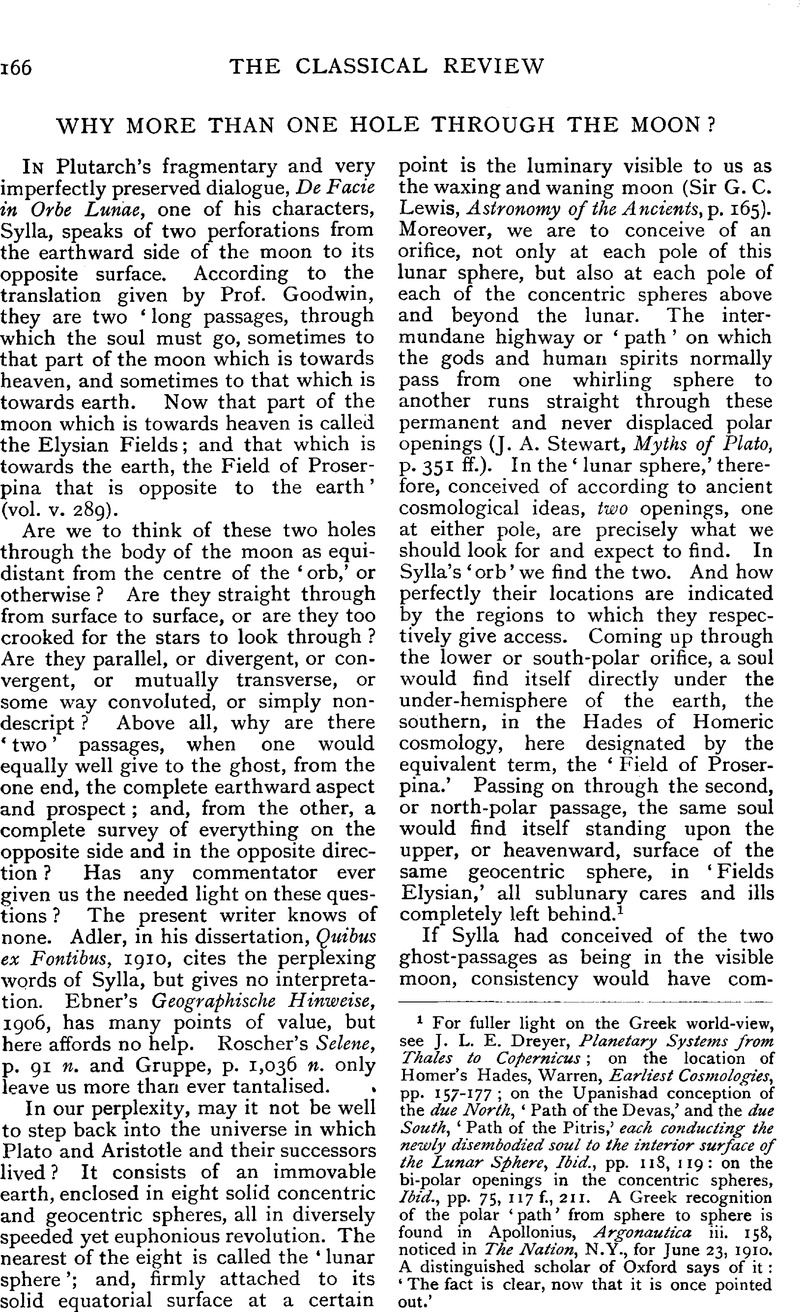No CrossRef data available.
Article contents
Why More than One Hole through the Moon?
Published online by Cambridge University Press: 27 October 2009
Abstract

- Type
- Original Contributions
- Information
- Copyright
- Copyright © The Classical Association 1911
References
1 For fuller light on the Greek world-view, see J. L. E. Dreyer, Planetary Systems from Thales to Copernicus; on the location of Homer's Hades, Warren, Earliest Cosmologies, pp. 157–177; on the Upanishad conception of the due North, ‘Path of the Devas,’ and the due South, ‘Path of the Pitris,’ each conducting the newly disembodied soul to the interior surface of the Lunar Sphere, Ibid., pp. 118, 119: on the bi-polar openings in the concentric spheres, Ibid., pp. 75, 117 f., 211. A Greek recognition of the polar ‘path’ from sphere to sphere is found in Apollonius, Argonautica iii. 158, noticed in The Nation, N.Y., for June 23, 1910. A distinguished scholar of Oxford says of it: ‘The fact is clear, now that it is once pointed out.’




